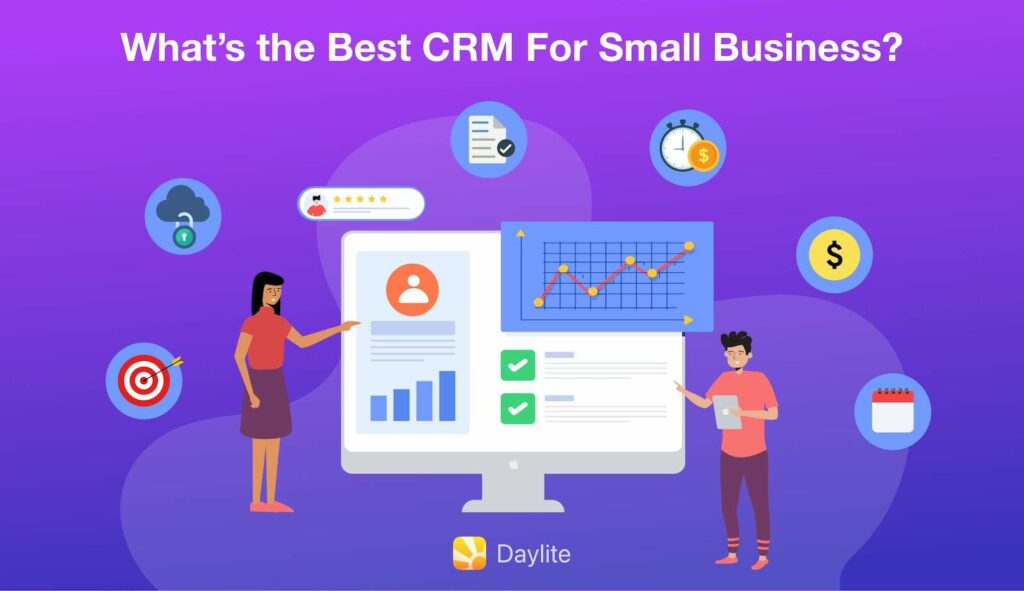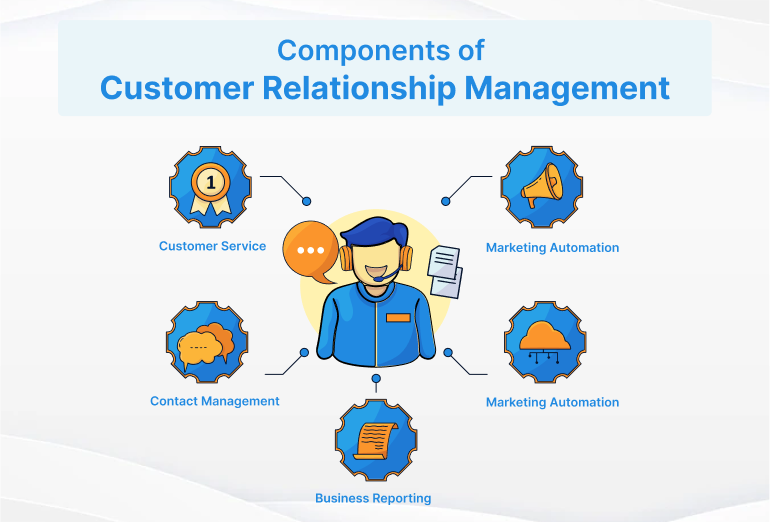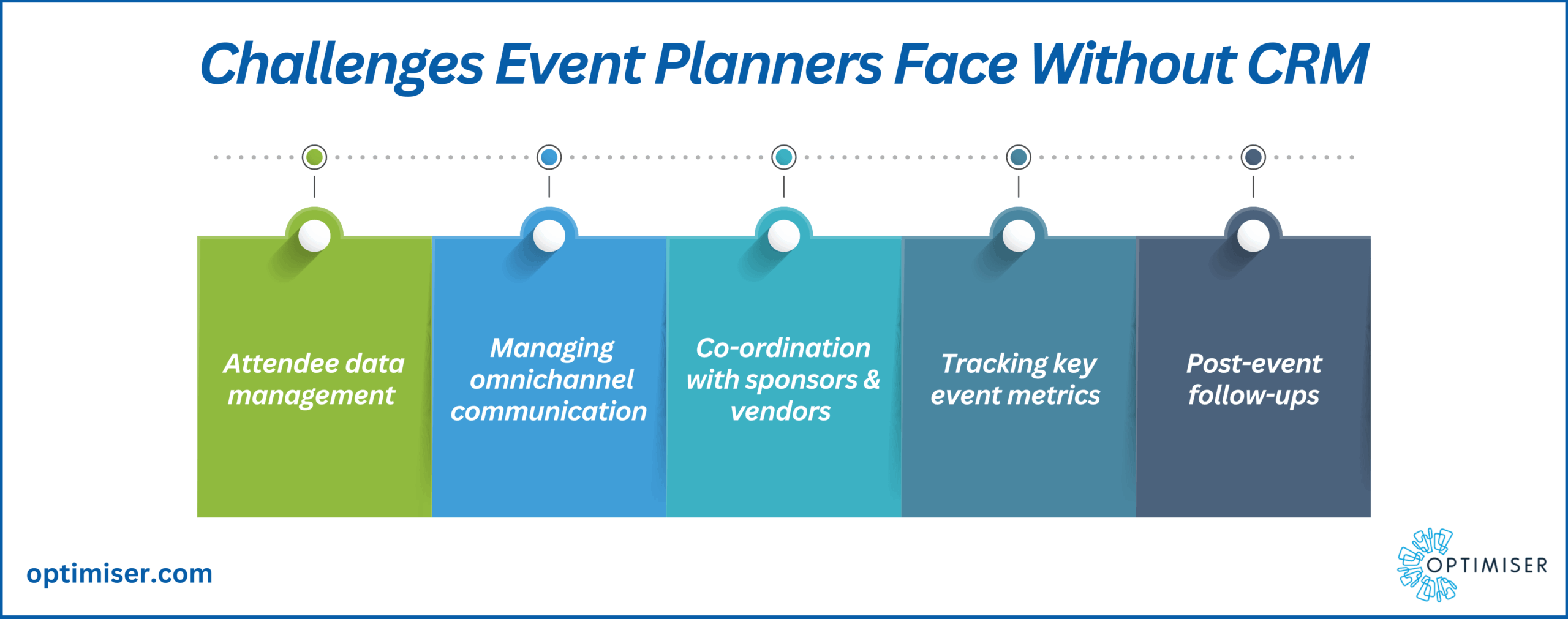
So, you’re running a small business. Congratulations! It’s a wild ride, isn’t it? You’re juggling a million things – from crafting your product or service to keeping the finances in check, and of course, chasing those all-important leads. And let’s be honest, lead generation can feel like an uphill battle. But what if there was a tool that could streamline the entire process, helping you capture, nurture, and convert leads into paying customers? Enter the world of Customer Relationship Management (CRM) systems, specifically designed for small businesses.
This comprehensive guide will delve into the world of CRM, focusing on its power in lead generation for small businesses. We’ll explore what CRM is, why it’s essential, and how to choose and implement the perfect solution for your specific needs. Get ready to transform your lead generation efforts and watch your business flourish!
What is CRM and Why Does Your Small Business Need It?
At its core, a CRM system is a technology that helps you manage all your interactions with current and potential customers. Think of it as a centralized hub for all your customer-related data. Instead of scattered spreadsheets, sticky notes, and overflowing email inboxes, a CRM brings everything together in one organized place.
Here’s a breakdown of what CRM typically entails:
- Contact Management: Store and organize all your contact information – names, phone numbers, email addresses, social media profiles, and more.
- Lead Management: Track leads as they move through your sales pipeline, from initial contact to conversion.
- Sales Automation: Automate repetitive sales tasks, such as sending follow-up emails or scheduling appointments.
- Marketing Automation: Run targeted marketing campaigns and nurture leads with personalized content.
- Reporting and Analytics: Gain insights into your sales and marketing performance with detailed reports and dashboards.
- Customer Service: Manage customer inquiries and support requests efficiently.
So, why is CRM so vital for small businesses? Here are some compelling reasons:
- Improved Lead Generation: CRM helps you capture leads from various sources, track their progress, and nurture them with targeted communication.
- Enhanced Sales Efficiency: Automate tasks, prioritize leads, and close deals faster.
- Better Customer Relationships: Personalize interactions and provide exceptional customer service.
- Increased Revenue: Convert more leads into paying customers and boost your bottom line.
- Data-Driven Decision Making: Gain valuable insights into your sales and marketing performance to make informed decisions.
- Scalability: CRM systems can grow with your business, accommodating your evolving needs.
Key Features to Look for in a CRM for Lead Generation
Choosing the right CRM for your small business is crucial. You need a system that fits your specific needs and helps you achieve your lead generation goals. Here are some essential features to look for:
1. Lead Capture and Management
This is the heart of any CRM for lead generation. The system should allow you to:
- Capture leads from various sources: Integrate with your website forms, landing pages, social media, and other marketing channels.
- Segment leads: Categorize leads based on demographics, interests, and behavior.
- Score leads: Assign points to leads based on their engagement and likelihood to convert.
- Track lead activity: Monitor website visits, email opens, and other interactions.
2. Sales Automation
Automating repetitive sales tasks frees up your time to focus on closing deals. Look for a CRM that offers:
- Automated email sequences: Send personalized follow-up emails based on lead behavior.
- Task management: Schedule calls, meetings, and other tasks automatically.
- Deal tracking: Monitor the progress of each deal through your sales pipeline.
- Sales forecasting: Predict future sales based on your current pipeline.
3. Marketing Automation
Integrate your marketing efforts with your CRM to nurture leads and drive conversions. Features to consider include:
- Email marketing: Create and send targeted email campaigns.
- Landing page creation: Build landing pages to capture leads and promote your offers.
- Social media integration: Manage your social media presence and track engagement.
- Workflow automation: Automate marketing tasks based on lead behavior.
4. Reporting and Analytics
Data is your friend. A good CRM provides detailed reports and dashboards to track your performance. Look for features like:
- Sales reports: Track sales revenue, conversion rates, and other key metrics.
- Marketing reports: Analyze the performance of your marketing campaigns.
- Lead source tracking: Identify the most effective lead generation sources.
- Customizable dashboards: Create dashboards that display the metrics most important to your business.
5. Integrations
Your CRM should integrate seamlessly with other tools you use. Consider integrations with:
- Email marketing platforms: Mailchimp, Constant Contact, etc.
- Social media platforms: Facebook, Twitter, LinkedIn, etc.
- Accounting software: QuickBooks, Xero, etc.
- Project management tools: Asana, Trello, etc.
- Website builders: WordPress, Wix, etc.
6. Mobile Accessibility
In today’s fast-paced world, you need access to your CRM on the go. Ensure the CRM offers a mobile app or a responsive web design that works well on mobile devices.
Choosing the Right CRM for Your Small Business: A Step-by-Step Guide
With so many CRM options available, choosing the right one can feel overwhelming. Here’s a step-by-step guide to help you navigate the process:
Step 1: Define Your Needs and Goals
Before you start researching CRM systems, take the time to understand your specific needs and goals. Ask yourself:
- What are your current lead generation challenges? (e.g., lack of organization, difficulty tracking leads, inefficient follow-up)
- What are your lead generation goals? (e.g., increase lead volume, improve conversion rates, shorten sales cycle)
- What features are essential for your business? (e.g., lead capture, sales automation, marketing automation)
- How many users will need access to the CRM?
- What is your budget?
Answering these questions will help you narrow down your options and identify the CRM features that are most important to you.
Step 2: Research CRM Providers
Once you know your needs, start researching CRM providers. Here are some popular options for small businesses:
- HubSpot CRM: A free CRM with powerful features for lead generation, sales, and marketing.
- Zoho CRM: A comprehensive CRM with a wide range of features and integrations.
- Salesforce Sales Cloud: A robust CRM with advanced features, suitable for growing businesses.
- Pipedrive: A sales-focused CRM designed to streamline the sales process.
- Insightly: A CRM that focuses on project management and customer relationship management.
- Freshsales: A sales CRM with features like built-in phone and email.
Read reviews, compare features, and check pricing to find providers that fit your budget and requirements.
Step 3: Evaluate and Compare Options
Create a shortlist of potential CRM providers and evaluate them based on the following criteria:
- Features: Does the CRM offer the features you need for lead generation, sales, and marketing?
- Ease of Use: Is the CRM user-friendly and easy to navigate?
- Integrations: Does the CRM integrate with your existing tools?
- Pricing: Is the pricing affordable and transparent?
- Customer Support: Does the provider offer reliable customer support?
- Scalability: Can the CRM grow with your business?
- Security: Does the CRM offer robust security features to protect your data?
Take advantage of free trials or demos to test out the CRM and see if it’s a good fit for your team.
Step 4: Implement the CRM
Once you’ve chosen a CRM, it’s time to implement it. Follow these steps:
- Plan your implementation: Define your implementation plan, including timelines, tasks, and responsibilities.
- Import your data: Import your existing contact information and other data into the CRM.
- Customize the CRM: Configure the CRM to meet your specific needs, such as creating custom fields and workflows.
- Train your team: Provide training to your team on how to use the CRM.
- Test the CRM: Test the CRM to ensure it’s working correctly.
- Go live: Launch the CRM and start using it to manage your leads and sales.
Step 5: Optimize and Refine
Implementing a CRM is not a one-time event. It’s an ongoing process. Regularly monitor your CRM usage, analyze your results, and make adjustments as needed. This includes:
- Track key metrics: Monitor your lead generation, sales, and marketing performance.
- Analyze your data: Identify areas for improvement.
- Make adjustments: Modify your workflows, customize the CRM, and optimize your processes based on your findings.
- Provide ongoing training: Ensure your team is up-to-date on the latest features and best practices.
Maximizing CRM for Lead Generation: Best Practices
Choosing and implementing a CRM is just the first step. To truly leverage its power for lead generation, you need to follow some best practices:
1. Integrate CRM with Your Website
Your website is a crucial lead generation tool. Integrate your CRM with your website to capture leads automatically. This includes:
- Embedding forms: Use web forms to capture leads directly on your website.
- Adding live chat: Use live chat to engage with website visitors and capture their contact information.
- Tracking website activity: Monitor website visits and identify leads who are actively engaging with your content.
2. Use Targeted Landing Pages
Create dedicated landing pages for your lead generation campaigns. These pages should be:
- Focused on a specific offer: Offer a valuable resource, such as an ebook, webinar, or free trial, in exchange for contact information.
- Visually appealing: Design visually appealing landing pages that are easy to read and navigate.
- Mobile-friendly: Ensure your landing pages are optimized for mobile devices.
- Integrated with your CRM: Connect your landing pages to your CRM to automatically capture leads.
3. Nurture Leads with Email Marketing
Once you’ve captured leads, nurture them with targeted email marketing campaigns. This involves:
- Segmenting your leads: Group leads based on their interests, demographics, and behavior.
- Creating personalized email sequences: Send automated email sequences that provide valuable content and move leads through the sales funnel.
- Tracking email performance: Monitor your email open rates, click-through rates, and conversion rates to optimize your campaigns.
4. Automate Sales Follow-up
Don’t let leads fall through the cracks. Automate your sales follow-up process to ensure that you’re consistently engaging with your leads. This includes:
- Setting up automated email reminders: Send automated reminders to follow up with leads after initial contact.
- Scheduling calls and meetings automatically: Use your CRM to schedule calls and meetings with leads.
- Tracking deal progress: Monitor the progress of each deal through your sales pipeline.
5. Leverage Social Media
Use social media to generate leads and engage with your audience. This includes:
- Sharing valuable content: Share blog posts, articles, and other valuable content on your social media channels.
- Running social media ads: Use social media ads to target potential leads.
- Engaging with your audience: Respond to comments, answer questions, and participate in relevant conversations.
- Using social listening: Monitor social media for mentions of your brand and industry keywords.
6. Analyze and Optimize Your Efforts
Regularly analyze your CRM data to identify what’s working and what’s not. This includes:
- Tracking key metrics: Monitor your lead generation, sales, and marketing performance.
- Analyzing your data: Identify areas for improvement.
- Testing different strategies: Experiment with different lead generation tactics and track the results.
- Making data-driven decisions: Optimize your lead generation efforts based on your findings.
Common Mistakes to Avoid When Using CRM for Lead Generation
Even with the right CRM in place, you can still make mistakes that hinder your lead generation efforts. Here are some common pitfalls to avoid:
1. Not Defining Your Ideal Customer Profile
Without a clear understanding of your ideal customer, you’ll struggle to target the right leads. Take the time to define your ideal customer profile, including their demographics, interests, needs, and pain points. This will help you tailor your marketing and sales efforts to attract the right leads.
2. Not Integrating Your CRM with Other Tools
A CRM is most effective when it’s integrated with your other tools, such as your website, email marketing platform, and social media channels. This integration allows you to capture leads automatically, track their activity, and personalize your communication.
3. Not Training Your Team
Your CRM is only as good as the people who use it. Provide comprehensive training to your team on how to use the CRM effectively. This includes training on lead capture, sales automation, marketing automation, and reporting. Make sure team members understand how to use the CRM to their advantage.
4. Not Cleaning Your Data
Dirty data can lead to inaccurate reporting, wasted marketing efforts, and a poor customer experience. Regularly clean your data by removing duplicates, correcting errors, and updating contact information. This will ensure that your CRM is accurate and reliable.
5. Not Following Up with Leads Promptly
The sooner you follow up with a lead, the more likely you are to convert them. Respond to leads promptly, ideally within minutes or hours of their initial contact. Use your CRM to automate your follow-up process and ensure that you’re consistently engaging with your leads.
6. Not Personalizing Your Communication
Generic, one-size-fits-all communication is ineffective. Personalize your communication based on your leads’ interests, demographics, and behavior. Use your CRM to segment your leads and send targeted messages that resonate with them.
7. Not Measuring Your Results
If you’re not measuring your results, you won’t know what’s working and what’s not. Track your lead generation, sales, and marketing performance. Analyze your data to identify areas for improvement and optimize your efforts accordingly.
The Future of CRM and Lead Generation
The landscape of CRM and lead generation is constantly evolving. Here are some trends to watch:
- Artificial Intelligence (AI): AI is being used to automate tasks, personalize customer experiences, and predict customer behavior.
- Mobile CRM: Mobile CRM is becoming increasingly important as more and more businesses operate on the go.
- Customer Data Platforms (CDPs): CDPs are being used to collect and manage customer data from various sources.
- Hyper-Personalization: Businesses are using data to create highly personalized experiences for their customers.
- Focus on Customer Experience: Businesses are prioritizing customer experience to drive loyalty and retention.
By staying informed about these trends, you can ensure that your CRM and lead generation efforts remain effective in the years to come.
Conclusion: Embracing CRM for Lead Generation Success
In conclusion, a CRM system is an invaluable asset for any small business looking to boost its lead generation efforts. By choosing the right CRM, implementing it effectively, and following best practices, you can transform your sales and marketing processes, build stronger customer relationships, and achieve sustainable growth.
Don’t let lead generation be a constant struggle. Embrace the power of CRM and unlock the potential of your small business. Start by assessing your needs, researching your options, and taking the plunge. Your future customers are waiting!

